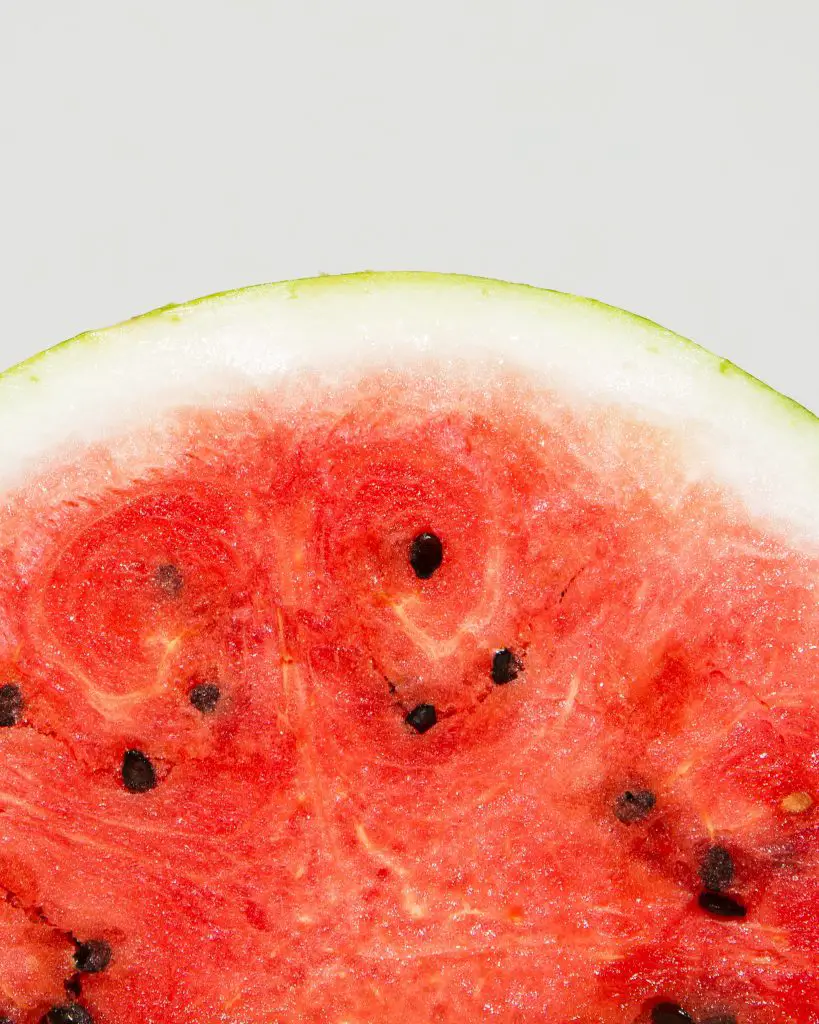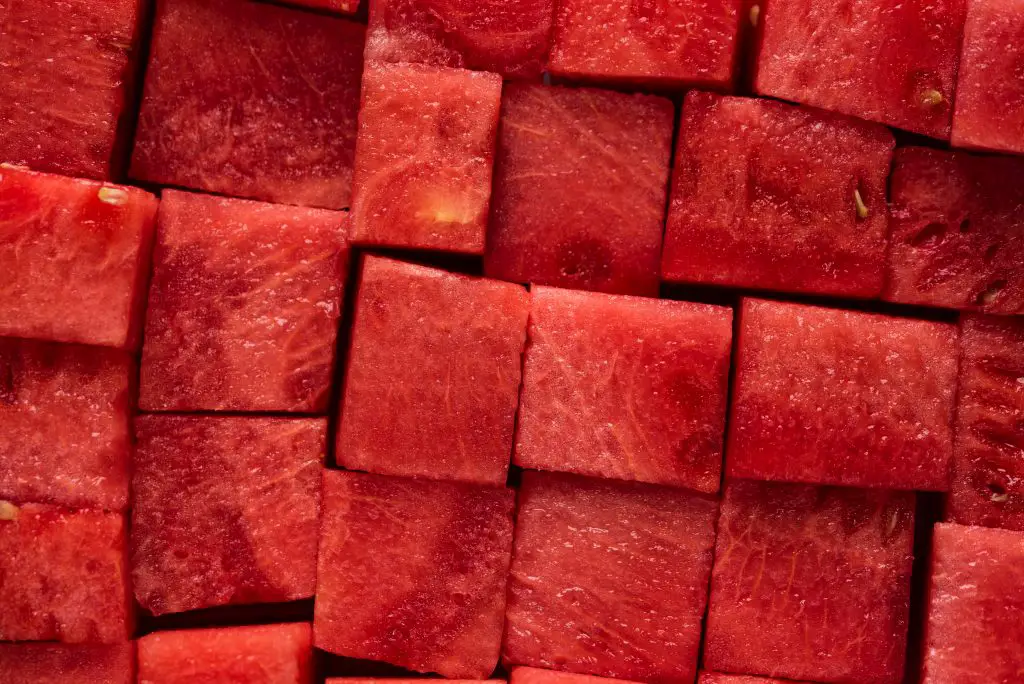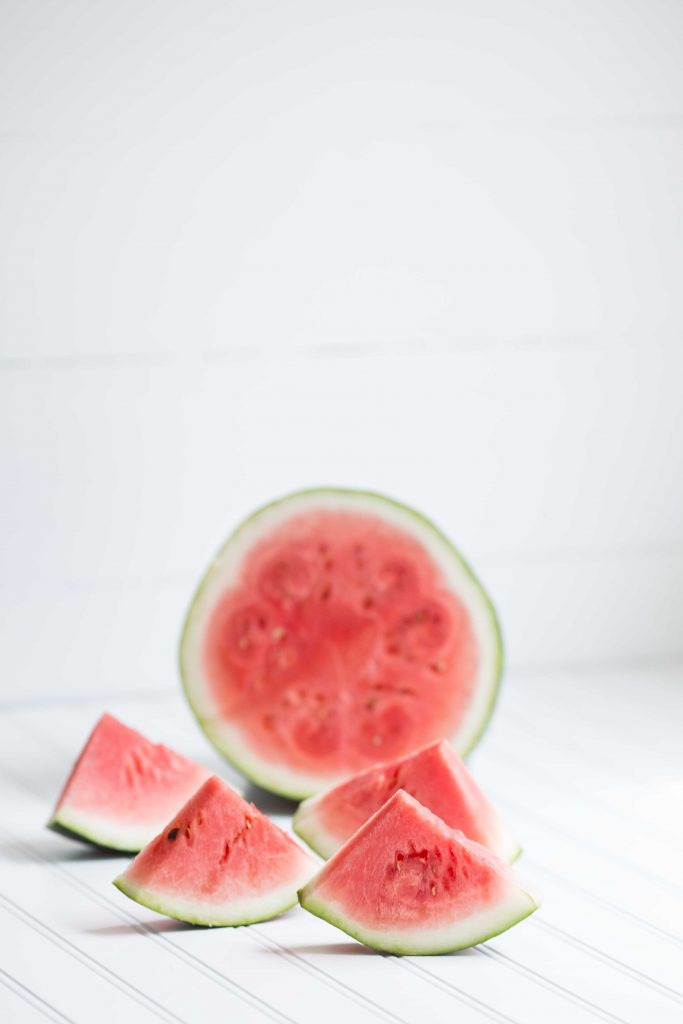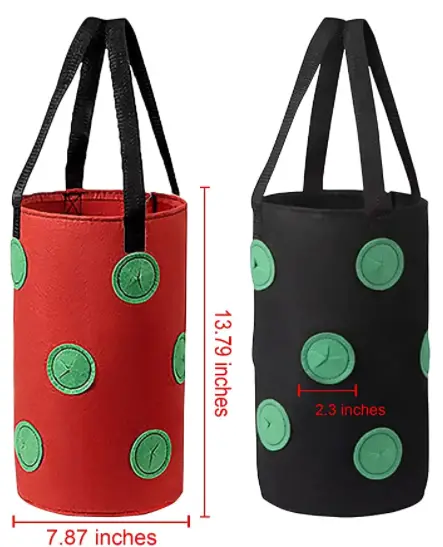Do Watermelons Grow On Trees? Eating a cold watermelon from the fridge in summer is one of life’s great pleasures. There is nothing better than having a munch on a cool sweet-tasting fruit on a hot day. However, you may have wondered where the fruit actually comes from and also what type of plant it grows on. Does it grow on trees or on some other type of plant?
Watermelons do not grow on trees they are produced on a vine that sprawls across the ground. The size of these vines can vary significantly depending upon the particular variety. Those varieties that produce the largest fruit tend to also produce the longest vines, in some cases, the vine can reach up to 60 feet long.
So if you are considering growing them in your own backyard you may want to take this into consideration to ensure that you have enough space. However, you can maximize the output of your garden by planting other crops in the same space which have complementary to the growth habits of the vine. An example of this is planting corn and beans in the same place because they will not interfere with the growth of the watermelon and they will also aid its growth.
The addition of a legume such as beans increases the level of nitrogen in the soil helping it to grow. This method is a variation on the traditional Native American growing methods of the three sisters’ which traditionally incorporates corn, beans, and pumpkin.

About Watermelon
Watermelons are a member of the cucurbit family that originated in Africa. As a result of the close proximity of the plants to Europe, it was introduced much earlier than many of the other cucurbits such as corn and pumpkin which did not appear in Europe until the 16th century as they originate in North America.
Due to early their introduction into Europe, they became widely grown in a number of regions. This has resulted in the development of a huge range of different varieties some of which are more suited to cooler climates. These varieties are commonly divided into 4 major groups; seedless, yellow-fleshed, icebox, and picnic varieties.
Seedless varieties are the main type of watermelon that can be purchased from grocery stores these days. They have been specifically developed to only produce the white immature seeds in the fruit that are edible. This is achieved by hybridizing varieties to create new species that have more chromosomes than traditional watermelons. Due to this mismatch in the number of chromosomes present in the fruit the black seeds do not develop properly because they cannot be pollinated producing the seedless varieties that we know today.
The second group is yellow-fleshed varieties, which as the name suggests are varieties that have yellow/orange flesh rather than the traditional red. One of the most popular varieties is Sweet Suburbia which generally comes in the top two or three varieties for both taste and yield when included in comparison studies. To read more about this click here.

The icebox varieties are watermelons that are smaller in size than many other types typically weigh between 10 and 15 pounds per fruit. These varieties are suitable for fitting into an icebox hence the name.
The final group is the picnic variety which covers those watermelons that are relatively large and can be eaten by large group of people at a picnic. These varieties can produce fruit that is up to 30 or 40 lbs in weight which means that they are most suited to feeding large groups of people.
How To Grow Watermelon
Watermelons are relatively easy to grow but like all cucurbits, they require a frost-free environment to grow that is relatively warm. Watermelon varieties typically take approximately 120 days to produce fruit though this can vary on the particular variety. Those varieties that produce smaller fruit generally produce fruit more quickly. To read more about varieties try visiting our vegetable database.
When selecting varieties we highly recommend that you choose a variety that produces smaller fruit as it is generally more convenient for home gardeners for a couple of reasons. The first reason is that smaller fruits can be eaten in a single sitting or even by a small family making it a much more convenient option. In addition to this, the size of the vine is generally smaller which means you need less space to grow the plants.
We also recommend choosing heirloom varieties rather than hybrids as you can collect the seeds for the following year. To purchase seeds we highly recommend that you visit seeds now as they are a company that specializes in heirloom varieties and also has a wide range of vegetable seeds at a competitive price.
Planting Watermelon Seeds
As watermelon seeds require relatively warm conditions it is recommended that you sow them into a seed tray rather than directly into the garden as this will accelerate the rate of growth. To get an early harvest if you live in a relatively cold climate it is recommended that you start the seeds off in a heated propagation tray rather than just placing them in a tray inside your house.
The reason for this is that the heated propagation tray will provide a consistent temperature throughout the germination period ensuring the optimum growth rate whereas seed trays placed indoors can vary in temperature throughout the day.
If you need to purchase a heated propagation tray the unit we recommend is the ipower heated propagation tray because it features a removable seat tray which is advantageous because this is the part of the seed tray that is most likely to deteriorate first. Being able to replace it will extend the life of the unit.
Additionally, the unit features a humidity dome which will help to maintain the temperature of the seedlings and generally improve the growth rate. To see the latest price on Amazon click on the link below.
To plant the seeds themselves start by filling the seed tray with a good quality seed raising mixture and then plant the seeds at a depth of approximately 0.5 inches (1 to cm). If you are using a modular seed tray it is recommended that you sow 2 seeds per cell to ensure that you get at least one plant per cell.
In warm conditions, you can expect the seedlings to appear after 7 to 14 days though this will vary depending upon the conditions in which you’re growing the seeds. The seedlings will typically need to spend around 6 weeks in the seed tray before they are large enough to be planted out into the garden.
During this period it is important that seedlings are regularly watered to ensure that they do not dry out at any stage.

Planting Watermelon Seedlings In The Garden
Once the seedlings have reached a reasonable size and are ready to be planted out into the garden they should be placed approximately 3 feet apart in the garden. However, this planting out should not occur until the daytime temperatures are at least 59°F to 68°F (15 to 20°C).
In terms of the location, the watermelon plants need a sunny spot that gets at least 6 to 8 hours of sun. This location should also have rich moist and free draining soil to ensure that the plant has all of the nutrients required. If you are unsure about the quality of the soil it is advisable to dig in a bag of compost before planting.
Once the seedlings are in the ground it is important to apply a thick layer of mulch to maximize moisture retention. Additionally, as seedlings are susceptible to attack from slugs and snails they need to be protected with snail bait.
If you live in a relatively cold climate where the weather can be somewhat variable it is also advisable to apply a row cover to the plants to ensure that they remain relatively warm. Row covers are relatively cheap and will extend the growing season significantly so in our view they are well worth investment.
If you are considering buying one you recommend trying the growsun row cover because it is relatively tall making it suitable for a wider range of plants. The product also features long hoops which will help to anchor the row cover into the ground securely. To see the latest price on Amazon click on the link below.

Increase Your Strawberry Crop Using Grow Bags
Once the plant is established in the garden there is very little maintenance required other than ensuring that you water the plant regularly and maintain a weed-free bed.
Harvesting Watermelons
Watermelons will typically be ready 90 days after the seedlings have been transplanted. However, telling when the fruit is ripe can be a little bit tricky for beginner gardeners. There are three main indicators that are used to judge this, the first is that the tendrils and stem attached to the fruit will often appear dried out. The second method that is used is to tap on the fruit itself. If you get a hollow sound that is an indication that it is ready. The last method is to check the underside of the fruit which will usually turn a pale yellow when it is ready.
I hope you found this article useful, if you have any questions or comments please leave them in the section below.
Relevant Articles
What is The Best Watermelon To Grow?
What Are There Different Types of Watermelon?
How Many Watermelon Per Plant?
How Many Honeydew Can A Plant Produce?


